(from my degree thesis, the translation is mine)
The concept
of quality
The International Organization
for Standardization (ISO), universally defines the quality of
a product as: "The totality of features and characteristics
of a product, process of service that bear on its ability to satisfy
stated or implied needs" (Dell’Orto and Sgoifo Rossi,
2000), therefore quality, mainly referred to foodstuffs, is a
concept which depends on a great number of variables, many of
which are subjective or bound to ethnic or even family tradition
factors (Centoducati et al., 1996; Sañudo et
al., 1996; Morrissey et al., 1998; Rubino et al.,
1999; Alfonso e Sañudo, 2000), but it can also
be modified by the contemporary consumer's trend to demand standardized
products, above all by the influence of advertising (Manfredini,
1992; Vergara e Gallego, 1999).
The fulfillment of the above mentioned demand is extremely complex
and linked to a multifactorial whole of health, nutritional, technological
and organoleptic components (Panella et al., 1995), which
is very difficult to define in an unequivocal way and which is
however extremely variable in space and time.
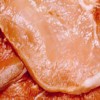
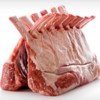
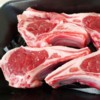
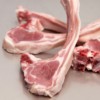
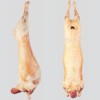
Meat quality
The quality traits to be preliminarily
assesses are the hygienic and sanitary ones, such as the origin
of meat from living animals not suffering from diseases, the absence
in the meat of parasites and pathogenic microorganisms, the keeping
behind the tolerance limits fixed by the laws in force for the
concentration of drugs, antibiotics, pesticides, radioactive elements
residues, and the total absence of traces of substances with an
hormonal or antihormonal effect, for which the tolerance limit
is zero, since they are banned by the Italian and European Union
laws (Manfredini, 1992; Asso.Na.Pa., 1998).
The fulfilment of these quality requirements is above all left
to the veterinary checks on meat performed by the Local Health
Authorities but, since the check on the finished product can't
totally guarantee its healthiness, often turning out to be belated,
the recent Italian and European rules (Legislative decree 26/05/97,
no 155, which came into force on April 1st 2000,
adopting EEC Directives no 93/43 and 96/3) introduced also
self-monitoring and self-certification, in accordance with HACCP
system, performed by those involved in the production chain (Noce,
1999).
The HACCP system, that is Hazard Analysis Critical Control Point,
is used to detect and remove any possible source of hazard for
human health that could be met along the production process (Silliker,
1989; Noce, 1999).
These hygienic and sanitary quality traits are taking an ever-increasing
importance, making a great expansion of organic production predictable
even in the ovine meat sector and, in perspective, putting Italian
farms in a favourable position, since their frequent extensivity,
and therefore their low environmental impact (Sañudo
et al., 1998b), makes them particularly suitable to a sustainable
and ecologically compatible agriculture system (Morbidini et
al., 1999).
Beyond hygienic and sanitary factors, quality is also defined
by sensory parameters, assessed on the raw product, which therefore
affect mainly the consumer's choice to buy or not the product,
like colour, flavour, grain, marbling, water holding capacity
(Lanza and Biondi, 1990; Sarti, 1992c; Panella
et al., 1995).
Other parameters can be instead valued at the moment of employment,
that is on the cooked product, like taste, juiciness, tenderness,
cooking loss and overall satisfaction (Lanza and Biondi,
1990; Panella et al., 1995) and can be determined in a
laboratory with instrumental methods or by panel tests.
A panel test is an organoleptic assessment performed by a panel
of selected tasters trained in specially organized training courses
(Panella et al., 1995), that make use of several kinds
of evaluation scales, with a highly variable number o degrees
for the different parameters considered: for instance 8-point
scales up to 100-point scales can be used (Young et al.,
1997; Nute et al., 1999; Sañudo et al., 2000a).
It has been however noticed that not necessarily the panel tests
results reflect the real consumers' likings, so much so that recent
researches used as tasters the members of ordinary families, not
trained as tasters (Alfonso and Sañudo, 2000).
It must finally remark that the parameters that should be assessed
on cooked meat obviously take different values for different cooking
methods, and that the choice of these methods is closely linked
to the sort of meat which is traditionally consumed: in the Mediterranean
countries the meat is yielded mostly from very young animals,
and is usually grilled or roasted, whereas in the Anglo-Saxon
countries, seen the consumption of more grown-up lambs, or even
of sheep meat, the stew consumption is traditional, with a greater
attention to seasoning rather than to the proper taste of meat,
therefore poorly appreciating the meat of very young animals (Alfonso
and Sañudo, 2000).
Colour
The red colour of meat, including
ovine meat, is mainly given by myoglobin,
a red pigment of the muscular tissue, which is prevailing in the
muscles compared to blood haemoglobin (Lawrie, 1966). The
meat colour changes can be ascribed to the chemical state of this
pigment, that can vary from purplish-red (reduced myoglobin),
to bright red (oxigenated myoglobin), to brown (oxidized myoglobin),
while serious deterioration of meat, and therefore of pigment,
can give anomalous colours as greyish-brown or green (Lawrie,
1966). Physical variations of the muscle (low pH, tight and very
reflective myofibrill bundling) can instead give pale meat (Panella
et al., 1995).
The colour is instrumentally measured with reflectometer, generally
speaking according to the guidelines of CIE, Commission Internationale
de l’Éclairage (1976), or according to the Hunter
method, striking the meat surface with standard illuminants, and
reading a triad of parameters: L* (lightness), a* (Red-Green index)
and b* (Blue-Yellow index), with a method hence named CIEL*a*b*
or CIELAB, also using the derived parameters: Chroma (C),
meaning how much white is mixed to a colour, and Hue (H), showing
the predominant colour.
There is also a subjective colour evaluation, even if it's seldom
used, being less satisfactory than the instrumental method, and
it's also based on numeric scales, for instance with values from
1 (pale) to 5 (dark red) (Sañudo et al., 1996).
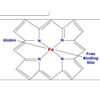
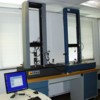
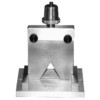
Tenderness
This parameter is intuitively
clear for the consumer but it's however difficult to give a definition
for it: Grau (1978) proposed: "chewability, softness,
pastiness, juiciness, amount and sort of the residue after the
mastication, in addition to the opposite traits as firmness, strength
and fibres length".
It's generally defined as Shear Force, measured in kg/cm2
and it's determined with devices as bitetenderometer and Instron
universal with Warner Bratzler Shear
(Panella et al., 1995); it consists of the force needed
to go through a piece of meat of a certain thickness or to penetrate
in it down to a certain depth, but it can also be measured as
crushing force of a meat sample (Lawrie, 1966).
Tenderness is closely linked to the connective tissue amount in
the muscle and to its features (Grau, 1978), in particular
to collagen, to its solubility and to the branching degree of
its structures (Renieri et al., 1993), so much so that
the measurement, with various methodologies, of the collagen amount,
can give us useful information on meat tenderness (Avery and
Bailey, 1995). A further method for tenderness evaluation
is the measurement of collagen thermal solubility (Grau,
1978).
In a panel-test tenderness is evaluated as the opposite of the
force needed to bite through a meat sample with the molar teeth:
a greater tenderness corresponds to a lesser force used (Campo
et al., 1999).
Tenderness is related to grain and texture, which are in their
turn defined by the diameter of muscular fibers bundles, in which
the muscle is divided by the connective tissue (Lusetti,
1983).
Grain is valued as the appearance of the cross-section of a cut
of meat, perpendicular to muscular fibers. When the cut surface
appears soft and velvety, the grain is defined as fine and it's
indicative of a reduced diameter of fiber bundles, while if the
cut surface is rough and dry, the grain is defined as coarse,
and it's ascribable to a large diameter of the bundles and it's
characteristic of aged animals; it must furthermore remark that
different muscles have as a rule different grains (Lusetti,
1983).
Texture is instead assessed dissecting the muscle along the fibres
and slightly stretching it: a firm texture is found in young and
well fed animals while a loose texture is found in very young
or aged, underfed or poorly fed animals. Even texture depends,
besides, on the type of muscle (Lusetti, 1983).
According to Carlucci et al. (1999) the meat with regard
to texture, can be defined as:
- tender, when low force is needed to chew the product,
- stringy, when fibres are perceived during the mastication,
- juicy, when water is perceived during the mastication,
- cohesive, when it's difficult to swallow.
In a panel test texture is evaluated as fibre perceived
by the taster on a sample after four chews; also residue is evaluated,
defined as the amount of connective tissue perceived by the taster
before swallowing (Campo et al., 1999).
Flavour
Meat flavour is defined as whole
of taste and odour (Grau, 1978), but, according
to some Authors, also includes texture and pH (Lawrie,
1966).
Meat flavour is due to adipose tissue, in a prevailing way compared
to muscular tissue (Lanza and Biondi, 1990), since
the former is able to "trap" flavours originated by
other chemical compounds, in order to release them later, throughout
cooking and, above all, because the volatile compounds which form
throughout cooking originate from lipids oxidation, in addition
to Maillard reaction between amino acids and carbonilic compounds
(Elmore et al., 2000).
The flavour consists of the presence (and intensity), or absence,
of a great number of single flavours, that can be agreeable like,
for instance: sheepmeat, liver, poultry, boiled meat, stock, meaty,
fruity, grassy, fat, oil, butter, or even disagreeable, as: animal
(the odour of confined livestock), rancid, pungent, musty, fish,
stale; it also includes tastes, defined as metallic, acidic, game,
skatole/faecal, beef, pork/bacon, bitter, urine/kidney, mild,
raw, mint, sticky, odd, cloth, barbecue, and odours as cabbage,
roast, barnyard, heated rubber, plastic, ammonia (Rousset-Akrim
et al., 1997; Young et al., 1997; Sañudo
et al., 1998a; Hopkins et al., 1998; Carlucci et
al., 1999; Fisher et al., 2000).
Among these flavours, the one who strongly characterizes ovine
meat is that named sheepmeat, that is the typical odour of the
meat from ovines, disregarding their age. This odour has been
identified as the one which determines the non-liking in countries
with a low per capita consumption, as those of continental Europe
or United States, and vice versa as the main choice factor in
the countries with high ovine meat consumption, like United Kingdom,
Australia and New Zealand (Rousset-Akrim et al., 1997;
Young et al., 1997; Rubino et al., 1999; Alfonso
and Sañudo, 2000).
This flavour has recently been the subject of many researches
and it has been established that it originates from branched chain
fatty acid (BCFA) the most important of which for flavour formation
are 4-methyloctanoic and 4-methyloctanoic (Young et al.,
1997), and from phenolic compounds originating from chlorophyll
and lignin ruminal fermentation (Panella et al., 1995;
Young et al., 1997). It seems to increase with the age
of the animal and, according to some Author, it's higher in the
males over the puberty than in females (Rousset-Akrim
et al., 1997).
However even linear-chain fatty acids are involved in flavour
and odour intensity, which seems to be positively correlated in
particular with stearic acid, oleic acid and linolenic acid, and
negatively with linoleic acid. The fact that such higher flavour
intensity be appreciated or not by the consumer is, as seen before,
closely linked to individual and collective dietary traditions,
habits and customs (Sañudo et al. 2000a; Alfonso
and Sañudo, 2000).
Juiciness
This sensation is extremely
important to define the liking of meat: it is possible to draw
a distinction between an immediate component, given by the moisture
sensation during the first chews, due to the fast release of fluids
by the meat, and an extended component, mainly due to the stimulus
of salivation given by the meat fats. This explains why meat from
young animals can initially give a juiciness sensation, and then
be perceived as dry, due to its poor amount of intramuscular fat
(Lawrie, 1966).
Juiciness is evaluated by the panel tests as the amount of liquid
released by the sample after a certain number of chews, two as
a rule (Campo et al., 1999), or even as total humidity
perceived in the mouth after mastication (Sañudo et
al., 2000b).
The two different methods approximately correspond to the two
different components mentioned at the beginning of this paragraph,
and can lead to evaluate in a different way the same sample of
meat (Sañudo et al., 2000b).
Obviously all the factors determining water losses, as thawing
or some cooking method, determine a decrease in juiciness, which
is closely linked to water holding capacity (Lawrie,
1966).
Water
Holding Capacity
The Water Holding Capacity (WHC),
depends on free moisture (representing more than 95% of total
water content of the muscle) that is the water not chemically
bound to proteins, but physically held by them, in a continuity
relation with the chemically bound water. A low water holding
capacity means a higher amount of water expelled during mastication,
therefore a higher juiciness (Lawrie, 1966), and it is
positively correlated with tenderness (Gigli et al., 1994).
The method commonly used to evaluate WHC is the simple but accurate
enough Grau and Hamm (1953) technique, consisting of subjecting
meat, in strictly set condition, to a certain pressure, such that
is allowed the oozing of free water but not of the bound one,
which remains in the muscle (Grau, 1978). Other more accurate
methods make use of centrifugation with defined parameters (Castellini
et al., 1998).
The WHC is not uniform, but it changes depending on the individual,
breed, age, sex, diet, rearing, slaughtering method and it also
changes from muscle to muscle (Lawrie, 1966).
Fat content
As previously said, the Italian
consumers don't like exceedingly fat meats, though a modest amount
of marbling and subcutaneous fat gives to the meat some favourable
traits, as higher tenderness, juiciness, flavour and palatability
(Jeremiah, 1998; Sañudo et al., 2000a;
Sañudo et al., 2000b). The presence of a thick enough
subcutaneous fat layer has also the favourable effect of reducing
ovine meat dehydration when it is frozen (Renieri et al.,
1993).
Usually the consumers don't like foods with a high calorific value,
or deemed as such (Renieri et al., 1993); from recent
researches emerges that, even though fat percentages in Italian
meat are extremely low, the consumer has the mistaken perception
of a lipidic content much higher than real (Dell’Orto
and Sgoifo Rossi, 2000).
Chemical
composition
The recent findings of dietetics
attribute a great importance for the human health to the presence
in the diet of unsaturated fatty acids, to the unsaturated/saturated
ratio, to the estimate of atherogenic and thrombogenic indexes,
that evaluates the incidence in food of the saturated fatty acids,
dangerous for the arteries, in particular lauric acid C12:0, miristic
acid C14:0 and palmitic acid C16:0 compared to unsaturated acids.
Even more recent is the attention towards the presence of polyunsaturated
fatty acids of the n-3 and n-6 types, mainly a-linolenic acid (C 18:3, n-3), eicosapentaenoic
acid (EPA, C 20:5, n-3), docosapentaenoic acid (DPA, C 22:5, n-3)
and docosahexaenoic acid (DHA, C 22:6, n-3).
These acids can be mainly found in fish meat and, to a lesser
extent, in ruminants' meat, for the most part in the phospholipids
(Elmore et al., 2000; Fisher et al., 2000): even
these fatty acids are important to lower the risk of coronary
disease and to decrease the blood thrombogenesis hazard (Enser
et al., 1996).
Therefore there's a growing number of researches aimed to know
and modify by means of the diet the fatty acids composition of
ovine meat (Rowe et al., 1999; Elmore et al., 2000)
which, as that of the other ruminants, shows a prevalence of saturated
fatty acids but, compared for instance to beef, displays a good
amount of n-3, and a better, therefore lower, n-6/n-3 ratio (Enser
et al., 1998b).
It has been verified that this ratio is as much favourable as
higher is the dietary n-3 input: for instance the grass of the
pastures is particularly rich in linoleic acid and other n-3 (Enser
et al., 1998b).
It could be objected that, starting from weaning, when the lamb's
rumen functions begin to be well developped, the rumen microorganisms
hydrogenate the most part of the unsaturated fatty acids coming
from the diet, but a significant part of them can anyway get over
the rumen and reach undamaged the intestine, where it is absorbed,
being then carried by the blood to the adipose tissue (Enser
et al., 1998b; Sañudo et al., 2000a).
It seems that the above mentioned better composition of ovine
meat, compared to beef, is due to a lower ruminal digestion and
oxidation by the whole body (Enser et al. 1998b),
and however researches have been performed to reach a further
decrease of ruminal hydrogenation by means of additives (Zezza
et al., 1996; Braghieri et al., 1999).
The difference due to rumen development, and therefore to the
age, it is however detectable: according to Cifuni et al. (2000),
a slightly higher percentage of unsaturated fatty acids can be
found in the adipose tissue of weaned lambs, compared to unweaned
ones, while other Authors report for heavy lambs, compared to
suckling lambs, a decrease of the saturated and unsaturated fatty
acids ratio, due to an increase of unsaturated fatty acids like
oleic, linoleic and linolenic and a decrease of palmitic (Sportelli,
1996); some other Authors, then (Petrova et al., 1994;
Banskalieva, 1997) don't ascribe to the age an important
role in the definition of this ratio, even if in these latter
two researches the comparison is between groups of all weaned
lambs.
The fatty acids composition also gathers a great prominence on
flavour, since during the cooking they release several volatile
compounds, which give rise to the peculiar organoleptic traits
of the ovine meat, with a special effectiveness on this purpose
of the polyunsaturated fatty acids, specially BCFA (branched chain
fatty acids) and n-3 (Fisher et al., 2000; Elmore et
al., 2000).
To sum up, it's not possible to say that ovine meat is a preferential
source of the essential for the health unsaturated fatty acids,
but it shows anyway a good balance in the composition of such
compounds and, in areas with a low per capita fish consumption,
it can supply a considerable share of n-3 requirements, anyway
in the frame of a balanced diet (Enser et al., 1996, 1998b).
pH
The pH is determined at slaughtering
(pH0) and after 24 hours (pH24), this is the first marker of meat
quality and allows us to assess the potentiality of animal muscle
to yield good meat; this parameter also gives a measure of the
attitude of this food to be stored: actually low pH values reduce
the microbial growth and thus prevent any prospective spoilage
(Dell’Orto and Sgoifo Rossi, 2000).
In order to yield meat of good quality the pH must decrease after
slaughtering, for the increase of lactic acid in the muscle, originated
by the post-mortem glicogen glycolysis; this decrease must
be gradual because, if it was too quick, protein denaturation
and water holding capacity lowering would take place (Lawrie,
1966; Lanza and Biondi, 1990).
The pH is also modified by the storage method: freezing determines
a pH decrease compared to the mere refrigeration (Moore et
al., 1998).
Moreover if the animal finds itself in stress conditions, above
all immediately before the slaughtering, the glicogen muscular
reserves are reduced, cutting the pH decrease down. due to glycolysis:
the pH can't thus reach low enough values and the meats appear
DFD, that is dark, firm and dry (Lawrie, 1966; Sarti,
1992c; Renieri et al., 1993; Dell’Orto and Sgoifo
Rossi, 2000), whereas a too fast pH decrease can yield PSE
(pale, soft and exudative) meat (Renieri et al., 1993).
Each of the enzymatic complex which are active post mortem in
the muscle, shows peculiar optimum values of pH, and therefore
meat tenderness, flavour, water holding capacity and colour are
influenced by pH, that therefore takes a relevant importance in
muscle transformations after slaughtering (Panella et
al., 1995; Dell’Orto and Sgoifo Rossi, 2000).
In particular Young et al, (1993) consider a higher pH
of the muscles as correlated with a more intense "sheepmeat"
flavour and odour in Merino lambs and Rousset-Akrim et al.
(1997) maintain that the issue during the cooking of volatile
compounds, sources of meat flavours and odours, decrease its quantity
and quality with the increase of raw meat pH.
Weep losses,
drip losses and shrink losses
These parameters measure liquid
losses of meat in various situations, they are closely linked
to water holding capacity, and are all measured as percentage
of fluids lost compared to the initial weight of the samples.
Losses must however be considered as a factor impairing quality,
since they involve a juiciness decrease and a loss not only of
water, but also of water-soluble nutritious compounds of meat
(Dell’Orto and Sgoifo Rossi, 2000).
The weep losses take place on raw meat but not on freezed meat
and can be assessed, for instance, as chilling loss, placing the
samples to drip in a refrigerator for 24 hours (Lawrie,
1966; Panella et al., 1995). These losses can negatively
affect even the choice at the moment of the purchase by the consumer,
who doesn't like the sight of the exudate that grows under the
raw meat, ascribing it to a poor freshness of the product (Dell’Orto
and Sgoifo Rossi, 2000).
The drip losses are linked, besides factors intrinsic to meat,
also to technological factors, between which the freezing speed,
that must be high, because a long freezing time determines the
growth of bulky ice cristals that, destroying the cellular structure
of the muscle, jeopardize its capacity to hold water and, more
generally, fluids (Grau, 1978; Lawrie, 1966). As
above mentioned, this damage can be lessened by the protecting
effect of subcutaneous fat on the muscle, slowing down the temperature
decrease in freezing (Renieri et al., 1993).
The shrink or cooking losses concern, besides water, also the
fat (Grau, 1978); even these losses negatively affect
the consumers perception of the product, leading them to think
the product they purchased is exceedingly rich in water, and therefore
has a poor nutritional value, and to suspect frauds, as the use
of hormones, not disregarding the above mentioned objective juiciness
loss.
Cooking losses are influenced by temperature, therefore by cooking
method, since high temperatures determine a more marked protein
denaturation and a larger loss by fat melting, mainly in cuts
rich in adipose tissue. Moreover, cooking temperatures being equal,
the losses are higher if this temperature is gradually reached,
while a fast heating causes the forming of a surface layer of
coagulated proteins (browning) that reduces the losses
(Lawrie, 1966; Lusetti, 1983). More generally, wrong
or unsuitable cooking methods can deeply affect meat tenderness,
juiciness and flavour, with much more evident negative effects
of any loss that could be caused by genetic or environmental factors
(Renieri et al., 1993).
If you want to quote this article, please refer at it as: GADDINI A. (2000) Influenza dell’età di macellazione e del sesso sulla qualità delle carcasse e delle carni di agnelli di razza Merinizzata Italiana da carne. Degree Thesis, University of Perugia, Italy: 1-24.
BIBLIOGRAPHIC REFERENCES:
ALFONSO M., SAÑUDO C. (2000) La calidad de la canal y la carne
ovina en Europa. Mundo Ganadero, 125: 60-67.
ASSO.NA.PA.
(1998) L'allevamento
ovino, 2a edizione. Asso.Na.Pa., Roma.
AVERY N.C., BAILEY A.J. (1995) An efficient method for the isolation of
intramuscular collagen. Meat Science, 41: 97-100.
BANSKALIEVA V. (1997) Effect
of age, physiological state and nutrition on fatty acid composition
in depot fat and ruminal volatile fatty acids in sheep. Small
Ruminant Research, 24: 37-42.
BRAGHIERI A., ZEZZA L., CENTODUCATI P., MELODIA L. (1999) Calcium soaps
for fattening lambs: effects on performances and meat quality.
In: Atti del XIII Congresso A.S.P.A., Piacenza, 21-24 giugno:
601-603.
CAMPO M.M., SAÑUDO C., PANEA B., ALBERTI P., SANTOLARIA
P. (1999) Breed
type and ageing time effects on the sensory characteristics of
beef strip loin steaks. Meat Science, 51: 383-390.
CARLUCCI A., NAPOLITANO F., GIROLAMI A., MONTELEONE E. (1999)
Methodological
approach to evaluate the effects of age at slaughter and storage
temperature and time on sensory profile of lamb meat. Meat
Science, 52: 391-395.
CASTELLINI C., DAL BOSCO A., BERNARDINI M., CYRIL H.W. (1998)
- Effect
of dietary Vitamin E on the oxydative stability of raw and cooked
rabbit meat. Meat Science, 50: 153-161.
CENTODUCATI P., BRAGHIERI A., MELODIA L., TATEO A. (1996) Qualità
della carne ovina in funzione dell'età di macellazione
e del livello nutritivo della razione. In: Atti del XII Congresso
Nazionale S.I.P.A.O.C., Varese, 22-24 ottobre 1996:
141-144.
CIELAB (1976) Commission
International de l'Éclairage. CIE, Publ. N.36, Paris.
CIFUNI G.F., NAPOLITANO F., PACELLI C., RIVIEZZI A.M., GIROLAMI
A. (2000) Effect
of age at slaughter on carcass traits, fatty acid composition
and lipid oxidation of Apulian lambs. Small Ruminant Research,
35: 65-70.
DECRETO LEGISLATIVO 26 maggio 1997, n. 155 - "Attuazione delle direttive
93/43/CEE e 96/3/CE concernenti l'igiene dei prodotti alimentari"
DELL'ORTO V., SGOIFO ROSSI C.A. (2000) Aspetti nutrizionali e gestionali
per la produzione di carne bovina di qualità. L'Informatore
Agrario, 14: 45-56.
ELMORE J.S., MOTTRAM D.S., ENSER M., WOOD J.D. (2000) The effects of
diet and breed on the volatile compounds of cooked lamb. Meat
Science, 55: 149-159.
ENSER M., HALLETT K., HEWETT B., FURSEY G.A.J., WOOD J.D. (1996)
Fatty
acid content and composition of english beef, lamb and pork at
retail. Meat Science, 42: 443-456.
ENSER M., HALLETT K.G., HEWETT B., FURSEY G.A.J., WOOD J.D., HARRINGTON
G. (1998a) The
polyunsatured fatty acid composition of beef and lamb liver. Meat
Science, 49: 321-327.
ENSER M., HALLETT K.G., HEWETT B., FURSEY G.A.J., WOOD J.D., HARRINGTON
G. (1998b) Fatty
acid content and composition of UK beef and lamb muscle in relation
to production system and implications for human nutrition. Meat
Science, 49: 329-341.
EUROPEAN COMMISSION (1996) Commission Directive 96/3/Euratom, ECSC,
EC of 26 January 1996 granting a derogation from certain provisions
of Council Directive 93/43/EEC on the hygiene of foodstuffs as
regards the transport of bulk liquid oils and fats by sea. OJ
L 21, 27.1.1996, p. 42–46.
EUROPEAN UNION COUNCIL (1993) Council Directive 93/43/EEC of 14 June 1993
on the hygiene of foodstuffs. OJ L 175, 19.7.1993, p. 1–11.
FISHER A.V., ENSER M., RICHARDSON R.I., WOOD J.D., NUTE G.R, KURT
E., SINCLAIR L.A., WILKINSON R.G. (2000) Fatty acid composition and eating
quality of lamb types derived from four diverse breed x production
system. Meat Science, 55: 141-147.
GIGLI S., FAILLA S., IACURTO M., BONANNO A., ALABISO M., MORMILE
M. (1994) Stima
e correlazione dei parametri qualitativi della carne di agnelli
appartenenti a diversi tipi genetici. In: Atti del XLVIII congresso
della SISV (Società Italiana di Scienze Veterinarie), Giardini
Naxos (ME), 28 settembre-1 ottobre: 214.
GRAU R. (1978) Carne
e prodotti carnei. Edagricole, Bologna.
HOPKINS D.L., BEATTIE A.S., PIRLOT K.L. (1998) Meat quality of cryptorchid lambs
grazing either dryland or irrigated perennial pasture with some
silage supplementation. Meat Science, 49: 267-275.
IACURTO M., FAILLA S., GIGLI S., MORMILE M., BONANNO A., ALABISO
M., PORTOLANO B. (1996) Incroci Bergamasca (BG) x Pinzirita (PZ)
e Bergamasca x Comisana (CO), macellati a tre età e confronto
con le razze pure: caratteristiche fisiche del longissimus dorsi
(LD). In: Atti del XII Congresso Nazionale S.I.P.A.O.C., Varese
22-24 ottobre: 173-176.
JEREMIAH L.E. (1998) Development
of a quality classification system for lamb carcasses. Meat
Science, 48: 211-223.
LANZA A., BIONDI L. (1990) Miglioramento e valutazione della qualità
della carne negli ovi-caprini. In: Atti del II Simposio Internazionale
: "Nuove prospettive della ricerca sugli ovi-caprini.",
Varese-Ville Ponti, 23 novembre: 129-170.
LAWRIE R.A. (1966) Meat
Science. Woodhead Publishing Limited, Cambridge, England.
LUSETTI L. (1983) Principi
di scienza dell'alimentazione. Ed. Calderini, Bologna.
MANFREDINI M. (1992) Produzione
qualitativa e cause di variabilità. In: "Ovinicoltura"
- UNAPOC, Roma: 189-198.
MOORE V.J., PRASAD S., DEVINE C.E. (1998) Changes in lactic acid levels
during thawing of lamb chops. Meat Science, 49: 343-346.
MORBIDINI L., POLLIDORI P., SARTI D.M., VALIGI A. (1999) Carcass quality
of Italian Merino derived lambs. In: Atti XIII Congresso Nazionale
ASPA, Piacenza, 21-24 giugno: 598-600.
MORRISSEY P.A., SHEEHY P.J.A., GALVIN K., KERRY J.P., BUCKLEY
D.J. (1998) Lipid
stability in meat and meat products. Meat Science, 49:
S73-S86.
NOCE
G. (1999) Autocontrollo,
una questione di HACCP. Informatore Zootecnico, 20: 60-61.
NUTE G.R., WOOD J.D , ENSER M., HALLETT K.G., SINCLAIR L.A., WILKINSON
R.C. (1999) Eating
quality of lamb: differences between extreme breed per production
system groups. In: Proceedings of British Society of Animal
Science: 116.
PANELLA F., MORBIDINI L.,SARTI F.M., SARTI D.M. (1995) Caratteristiche
delle carcasse e qualità delle carni ovine, con particolare
riferimento alla razza merinizzata. In: Atti del Convegno:
"L'allevamento ovino e caprino in Basilicata: orientamento,
attività selettive e patologie", Latronico (PZ),
14 dicembre: 41-70.
PETROVA I., BANSKALIEVA V., DIMOV V. (1994) Effect of feeding on distribution
of fatty acids at Sn-2-position in triacylglycerols of different
adipose tissues in lambs. Small Ruminant Research, 13:
263-267.
RENIERI C., SILVESTRELLI M., STRADAIOLI G., CAVALLUCCI C., TRABALZA
MARINUCCI M. (1993) La
qualità della carne nella razza ovina Fabrianese. L'Allevatore
di Ovini e Caprini, 5: 7-11.
ROUSSET-AKRIM S., YOUNG O.A., BERDAGUÉ J.-L. (1997) Diet and growth
effects in panel assessment of sheepmeat odour and flavour. Meat
Science, 45: 169-181.
ROWE A., MACEDO F.A.F., VISENTAINER J.V., SOUZA N.E., MATSUSHITA
M. (1999) Muscle
composition and fatty acid profile in lambs fattened in drylot
or pasture. Meat Science, 51: 283-288.
RUBINO R., MORAND-FEHR P., RENIERI C., PERAZA C., SARTI F.M. (1999)
Typical
products of the small ruminant sector and the factors affecting
their quality. Small Ruminant Research, 34: 289-302.
SAÑUDO C., ALFONSO M., SÁNCHEZ A., DELFA R., TEIXEIRA
A. (2000b) Carcass
and meat quality in light lambs from different fat classes in
the EU carcass classification system. Meat Science, 56:
89-94.
SAÑUDO C., ENSER M.E., CAMPO M.M., NUTE G.R., MARÍA
G., SIERRA I., WOOD J.D. (2000a) Fatty acid composition and sensory
characteristics of lamb carcasses from Britain and Spain. Meat
Science, 54: 339-346.
SAÑUDO C., NUTE G.R., CAMPO M.M., MARÍA G., BAKER
A., SIERRA I., ENSER M.E., WOOD J.D. (1998a) Assessment of commercial lamb
meat quality by british and spanish taste panels. Meat Science,
48: 91-100.
SAÑUDO C., SANCHEZ A., ALFONSO M. (1998b) Small ruminant
production systems and factors affecting lamb meat quality. Meat
Science, 49. No. Suppl. 1: S29-S64.
SAÑUDO C., SANTOLARIA M.P., MARÍA G., OSORIO M.,
SIERRA I. (1996) Influence
of carcass weight on instrumental and sensory lamb meat quality
in intensive production system. Meat Science, 42: 195-202.
SARTI D.M. (1992c) Qualità
delle carni ovine. In: "Ovinicoltura" - UNAPOC, Roma:
311-314.
SILLIKER J.H. (1989) Basical
principles of HACCP system. In: Atti del convegno della Società
Italiana di Microbiologia Applicata: "La prevenzione delle
contaminazioni microbiche degli alimenti mediante il sistema HACCP",
Milano, 15 settembre: 11-23.
SPORTELLI G. F. (1996) Quale domani per l'ovinicoltura in Italia
? - Intervista a Emilio Bellitti, ordinario di Tecnologia delle
Produzioni Ovine e Caprine presso l'Università di Bari.
Dipartimento Produzioni Animali. Informatore Zootecnico,
21: 47-48.
VERGARA H., GALLEGO L. (1999) Effect of the suckling and lenght of lactation
period on carcass and meat quality in intensive lamb production
systems. Meat Science, 53: 211-215.
YOUNG O.A., BERDAGUÉ J.-L., VIALLON C., ROUSSET-AKRIM S.,
THERIEZ M. (1997) Fat-borne
volatiles and sheepmeat odour. Meat Science, 45: 183-200.
YOUNG O.A., REID D.H., SCALES G.H. (1993) Effect of breed and ultimate pH
on the odour and flavour of sheep meat. New Zealand Journal
of Agricultural Research, 36: 363-370.
ZEZZA L., CENTODUCATI P., MELODIA L., TATEO A. (1996) I saponi di Ca
nell'alimentazione di pecore in lattazione: influenza sulle caratteristiche
delle carcasse e delle carni degli agnelli. In: "Atti
del XII Congresso Nazionale S.I.P.A.O.C.", Varese, 22-24
ottobre 1996: 145-148.
 page
created: January
22nd 2012 and last updated:
February
6th 2012
page
created: January
22nd 2012 and last updated:
February
6th 2012